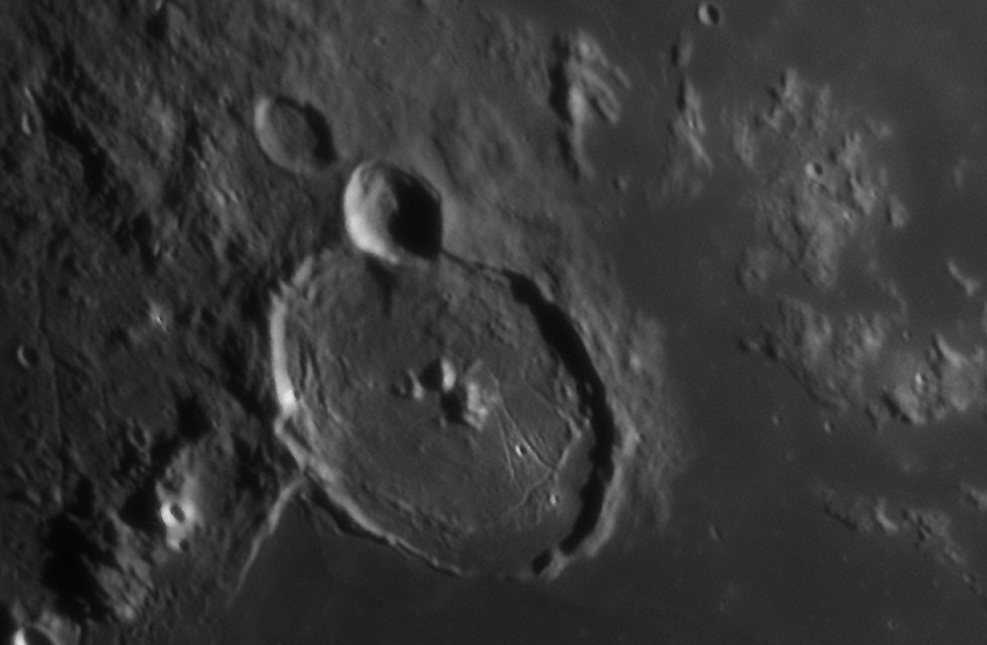
Conditions: beautiful spring evening, no wind, no clouds, haze below average, warm.
Setup: Obsession 18" f4.5 Dobsonian telescope with 4x Televue powermate, red filter, Lumenera Skynyx 2-2M camera binned 2x2 (image scale 0.2 arcsec/pixel). (image)
Acquisition: 5000 12-bit images were captured at 22 frames pr. second. Exposure time was 10 msec with the gain set to 3.8.
Although Dobsonians are great for many things they typically do not come with fabulous tracking capabilities when compared to a good quality equatorial mount. The scope used here has a ServoCat Drive system which permits tracking and fine adjustments; but the image may still move around quite a bit on the screen during a high magnification capture sequence. This - often erratic and large scale - motion easily causes popular stacking software such as Registax and AviStack to fail. The fix is quite simple: I manually go through the sequence and note down the position of some feature as it moves around. I only note down the position when the direction changes or if there is a sudden jump. For this 5000-frame sequence I took 21 readings, each consisting of: image number, x-position, y-position. Using some homemade software I then calculated the position on all frames (using interpolation) and offset the images to compensate. The result is a sequence that looks like it was aquired with a much more stable (and expensive!!) tracking system. The rest of the image processing was run-of-the-mill; Registax v. 5 multipoint alignment, selected best 60 images and applied a mild wavelet filter to the stacked result. Tweaked levels and curves in Photoshop.
Here's my main page where you can see more of the pictures I have taken so far.
Comments greatly appreciated! (mikael@leif.org)